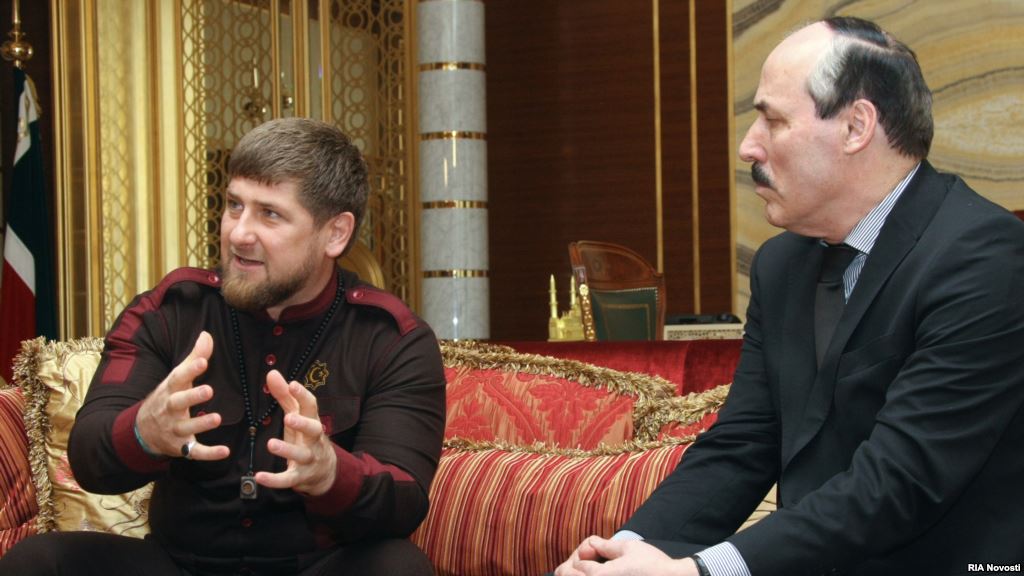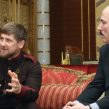
Unresolved Historical Territorial Disputes Add to North Caucasus Tensions
Publication: Eurasia Daily Monitor Volume: 13 Issue: 38
By:

Dagestan’s governor, Ramazan Abdulatipov, held a surprise meeting with Chechen activists who support restoring the Aukhov district in the republic. The issue dates back to 1944, when the Soviet government ordered the mass deportation of all Chechens to Kazakhstan and Kyrgyzstan. In 1957, after Joseph Stalin’s mass repression was condemned, the Soviet government decided to restore Checheno-Ingushetia. However, the issue of restoring the Aukhov district in Dagestan remained unresolved. Authorities in Moscow and Makhachkala did not settle the question, which would have required relocating the Dagestanis who moved into Chechen villages in 1944, after the Chechens were deported. The majority of the Dagestanis who settled in Chechen villages were ethnic Laks and Avars from the mountainous areas of Dagestan.
In the nearly 60 years since 1957, the Chechens have tried to convince Moscow to restore the district in Dagestan where Chechens were concentrated. The Russian authorities came close to a solution to the problem back in 1991, when the country’s parliament passed a law on repressed nationalities that envisaged restoring the rights of repressed peoples, including the resolution of territorial disputes (Zaki.ru, April 26, 1991).
Today, the issue of Chechens residing in Dagestan is even more acute, since they now number 100,000 (Gks.ru, 2010). The Russian government planned to build houses near Makhachkala for all Laks who occupy Chechen houses in the former Aukhov district. However, a lack of funds forced Dagestan to suspend the program. After Abdulatipov came to power in the republic, the relocation program was discussed more often in Moscow and in Khasavyurt, where the disputed areas are located. The new leadership of the Chechens in Dagestan became an important factor in accelerating a resolution of the Chechen issue in the republic. With the assistance of Chechen head Ramzan Kadyrov, three-time Olympic wrestling champion Buvaisar Saitiev led the Chechens’ efforts in Dagestan (Onkavkaz.com, October 2, 2015).
Saitiev is a highly respected figure in both Chechnya and Dagestan, hence those activists who tried to deepen divisions between Chechens and Avars in Khasavyurt district backed down. The resignation of the mayor of Khasavyurt, Saigidpasha Umakhanov, who was fiercely opposed to the restoration of the Chechen district in Dagestan, also helped (Chernovik.net, September 23, 2015). Umakhanov’s resignation meant that the forces who advocated restoring the Aukhov district in Dagestan won. This also marked a personal victory for Kadyrov, who was at odds with Umakhanov (Kavkazsky Uzel, April 24, 2014).
At the meeting with Dagestan’s Chechen activists in Makhachkala, on February 19, Abdulatipov announced that he had raised the issue of the Chechens in Dagestan at the meeting with President Vladimir Putin and received his support. Abdulatipov added: “I am glad that the Chechen community has such a leader as Buvaisar Khamidovich [Saitiev], who made both Dagestan and Chechnya famous. I am also thankful to the head of the Chechen Republic, Ramzan Kadyrov, for assistance in resolving this issue and to the now-deceased Ahmad-Haji Kadyrov for his understanding of these issues in the past” (Riadagestan.ru, February 19).
In response, Buvaisar Saitiev said that the Chechen community is interested in the peaceful and lawful resolution of the issue, and that they have the understanding and backing of Kadyrov (Grozny.tv, February 19). Thus, both Saitiev and Abdulatipov recognized that Kadyrov played an important role in the process of resolving the issue of Chechens in Dagestan. Many Dagestanis fear Kadyrov’s influence and think that as soon as the Chechen district is restored it will be handed over to Chechnya (Kavpolit.com, May 13, 2015).
Even though such a development is theoretically possible, to implement a handover of a district would be difficult legally; Kadyrov’s wish for it to happen would not suffice, since the parliament of Dagestan would have to approve it. For Kadyrov, the territory of the former Aukhov district is a sore point, since it has one of the most active jamaats in Dagestan and this area borders Chechnya. The Aukhov jamaat, along with jamaats in Khasavyurt, Babayurt and other cities, are structurally part of the larger Khasavyurt district jamaat. Militants in Dagestan maintain close relations with the militants in Chechnya, which bothers Kadyrov. At the same time, Kadyrov’s attempts to violate administrative borders and implement counterterrorist operations in Khasavyurt have antagonized the Dagestani police, who are fiercely opposed to Chechen police operations on their territory.
The Dagestani Chechens are impatiently waiting for the restoration of the Aukhov district, but restoring the district will not solve all their problems. The boundaries of the historical Aukhov district do not include the towns and villages where modern-day Chechens comprise the majority—Khasavyurt district and in the city of Khasavyurt. This may cause the revision of borders, which will raise territorial disputes with the Kumyks, who have lived in the area for several centuries. Thus, in solving one problem, the authorities will need to be prepared to encounter other problems. The example of the restoration of the Chechen district in Dagestan will also affect the resolution of the problem of the Ingush, who were deprived of their homes in the Prigorodny district of North Ossetia–Alania. Thus, the North Caucasian region is on the verge of renewed ethnic conflicts because the state has failed to address territorial issues that arose after the Bolsheviks came to power in the North Caucasus in 1920 and, to this day, still remain unresolved.




